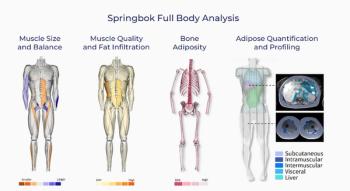
Promise of beta-blocker-free imaging slowly emerges
One of the promises of dual-source CT coronary angiography is the ability to scan patients without administering beta blockers. It was reported in the March issue of Diagnostic Imaging, however, that some imagers continue to use beta blockers, albeit with an improved workflow because they don't need to check for optimal heart rate. But several studies recently published and presented at conferences attest to the viability of scanning patients without beta blockers in a variety of cardiac situations.
One of the promises of dual-source CT coronary angiography is the ability to scan patients without administering beta blockers. It was reported in the March issue of Diagnostic Imaging, however, that some imagers continue to use beta blockers, albeit with an improved workflow because they don't need to check for optimal heart rate. But several studies recently published and presented at conferences attest to the viability of scanning patients without beta blockers in a variety of cardiac situations.
Dr. Hans Scheffel and colleagues from University Hospital Zurich found high diagnostic accuracy assessing coronary artery disease in a high pretest probability population with extensive coronary calcifications. The mean heart rate of the 30 patients was 70 bpm, ranging from 47 to 102 bpm, and the mean Agatston score was 821. Researchers found 98% of the 420 segments to be of diagnostic quality. They reported the findings at the 2007 European Congress of Radiology.
Dr. Francesca Pugliese and colleagues at University Hospital Rotterdam found that dual-source CT reliably detects coronary stent occlusion at all heart rates (mean: 67 bpm, range: 47 to 107 bpm). Of the 81 stents evaluated, nine were occluded. For the 15 with in-stent restenosis, researchers reported at the ECR that specificity and positive predictive value increased with a sharper kernel (B26f) and smaller field-of-view (10 cm). Quantitative catheter angiography served as the reference.
Dr. Christoph Becker at the ECR (20 patients) and Dr. Carsten Rist in the April issue of Der Radiologe (10 patients), both from Ludwig-Maximilians University in Munich, reported that left ventricular function assessed with dual-source CT correlated well with MRI. Becker's team found a high correlation with MRI for end-diastolic volumes (r = 0.98; plesser than or equal to 0.0001), end-systolic volumes (r = 0.34; p < 0.0044), ejection fraction (r = 0.99; p < 0.0001) and myocardial mass (r = 0.98; p < 0.0001). Rist found good correlation with MRI for EDV (r = 0.71; p = 0.02), ESV (r = 0.72l; p = 0.19), and EF (r = 0.75; p = 0.01).
Researchers concluded that dual-source CT not only enables evaluation of coronary artery lesions but also allows an accurate assessment of cardiac function within a single data set.
Newsletter
Stay at the forefront of radiology with the Diagnostic Imaging newsletter, delivering the latest news, clinical insights, and imaging advancements for today’s radiologists.



























